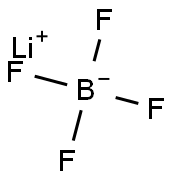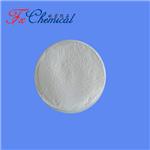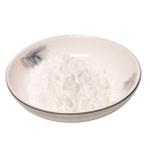Description
Lithium tetrafluoroborate, (LiBF4), lithium hexafluorophosphate, (LiPF6), lithium hexafluoroarsenate, (LiAsF6), lithium trifluoromethane sulfonate, (LiSO3CF3), are the electrolyte salts of the 21st Century. The performance of lithium ion cells, primary and secondary lithium cells depends on the purity of these compounds. Several hundred tons of these materials have been produced and many more tons -- and perhaps thousands of tons w will be required in the near future. One of the largest automotive producers predicts that there may be a market for 10-15 million pounds of these salts. The demand for Lithium ion primary cells is also very huge in electronics, computers, communication systems and military applications.
Preparation
Lithium tetrafluoroborate, LiBF4, is prepared by dissolving LiF in AHF and then BF3 gas is passed until precipitation is complete. After the reaction is over, excess HF is decanted and LiBF4 is dried under nitrogen until HF and H20 contents are reduced below 100 ppm level. Reaction is carried out in Teflon(R), polyethylene or polypropylene lined reactors to avoid metallic contamination.
Chemical Properties
white powder
Uses
Lithium tetrafluoroborate is a mild Lewis acid for Diels-Alder reactions. Catalyst for mild and efficient aminolysis of oxiranes. It is a reagent used in the preparation of rechargeable lithium-ion batteries.
Uses
Catalyst in organic synthesis; electrolyte for lithium ion batteries.
Uses
Lithium tetrafluoroborate (LiBF
4) finds application as electrolyte material in lithium ion batteries (LIBs). However, the presence of trace amount of water in LiBF
4 causes its hydrolysis which leads to HF generation and destruction of the battery electrodes. Our LiBF
4 contains < 100 ppm of water and is well suited for applications in LIBs.
General Description
This product has been enhanced for energy efficiency.
Flammability and Explosibility
Not classified
Purification Methods
Dissolve it in THF just below its solubility, filter from insoluble material and evaporate it to dryness in a vacuum below 50o. Wash the residue with dry Et2O, and pass dry N2 gas over the solid and finally heat it in an oven at 80-90o. Its solubility in Et2O is 1.3g in 100mL at 25o; in THF it is 71g in 100mL at 25o. It is hygroscopic and is an IRRITANT. [Elliott et al. J Am Chem Soc 74 5211 1952, 75 1753 1953.]






